#tsutomu takagi
Text

われ、八甲田より生還す-弘前隊・福島大尉の記録
高木勉
サンケイ出版
装幀=安彦勝博
6 notes
·
View notes
Text
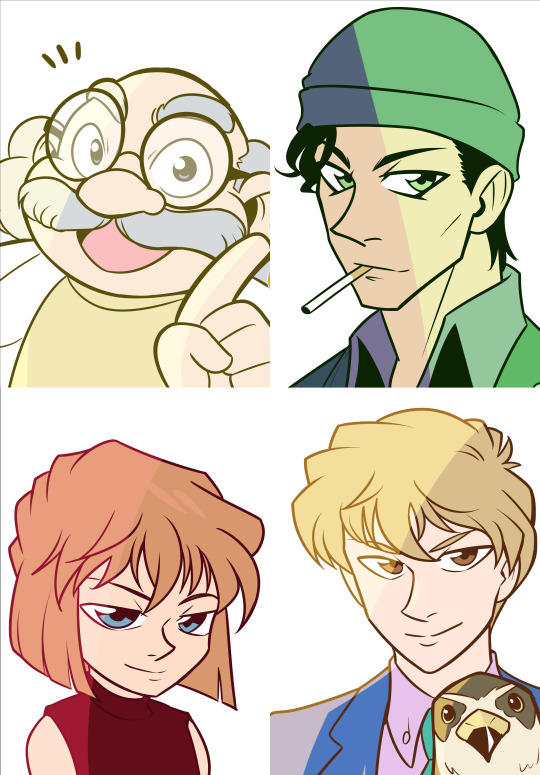
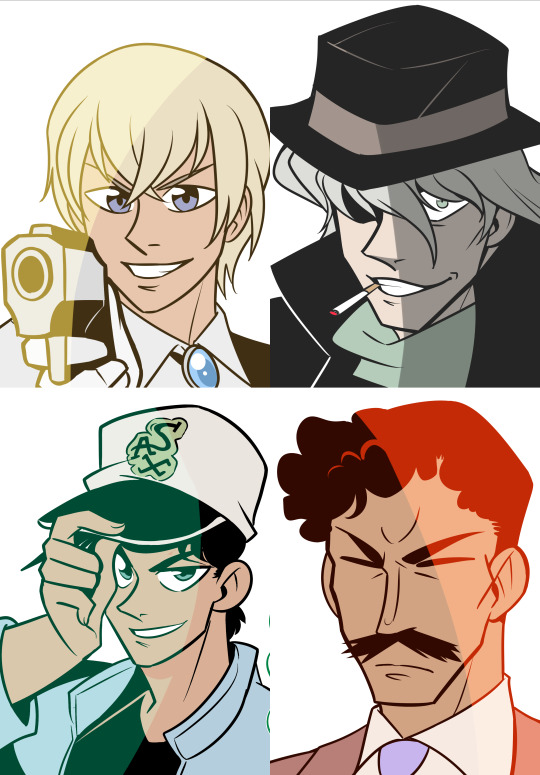

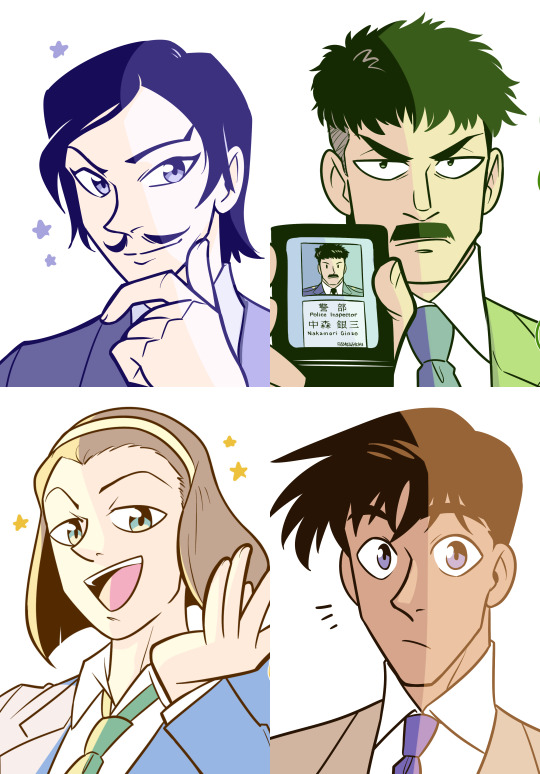

Here's all the drawings I did for that askbox meme awhile back since I was pretty happy with em! (Even if I wish I saved the full images without the Bingo board in the way.)
#dcmk#detective conan#magic kaito#kogoro mouri#shinichi kudo#haibara ai#sonoko suzuki#wataru takagi#detective conan vodka#detective conan gin#tsutomu akai#ginzo nakamori#morofushi takaaki#yumi miyamoto#masumi sera#heiji hattori#heizo hattori#shuichi akai#amuro tooru#rei furuya#hakuba saguru#hiroshi agasa#I think that's everyone#Or at least everyone that Would have a tag
206 notes
·
View notes
Note
Hi Master Detective, what are your thoughts on Movie 26 now that every (known) character's been disclosed and that Gosho's given a few hints with the submarine? Also, I've read your thoughts about Mary mistrusting Conan, do you think Conan took the picture at random or did he deliberately take a snap of her knowing she was hiding right under?
About Conan taking the photo of Mary in File 952, I definitely believe it was deliberate. He wanted to check just in case if Mary was under the balcony (since the reason he ran to the veranda was because he wanted to find Mary). You can even see his pause after getting distracted by Kokuri where he is likely contemplating Mary's whereabouts and then takes a photo under the balcony "to be on the safe side". The fact that Gosho later revealed Conan to already know that he captured her with that photo further suggests that it was no accident.
Movie 26 thoughts and predictions
We already know that Movie 26 ("Submarine" movie) is gonna be a Sherry/Haibara themed movie, so we can expect Miyano Shiho-centric story. This could mean Amuro having Elena memories while being reminded of Sherry, Agasa having Atsushi memories related to Shiho, Akai having Akemi memories related to her sister and us getting Sherry memories from Gin (or vice versa).

The standard characters that are expected for the classic BO movie are all the BO members, Conan, Haibara, Ran & Akai. The ones who are noteworthy cast mentions are Agasa, Kuroda, Sato & Shiratori.
It doesn't seem random that Gosho picked Agasa over for example Kogoro. It could be, as I mentioned above, that he is planning on giving Agasa more spotlight in this Sherry movie, since he is essentially her current parental figure and guardian that she holds dear. Possibly by giving us flashbacks to his meeting with her real parents, but at the very least by having him actively help her. It would also be appreciated if we somehow got Agasa-Fusae related references in the movie, through maybe Haibara's favorite Fusae Brand bags.
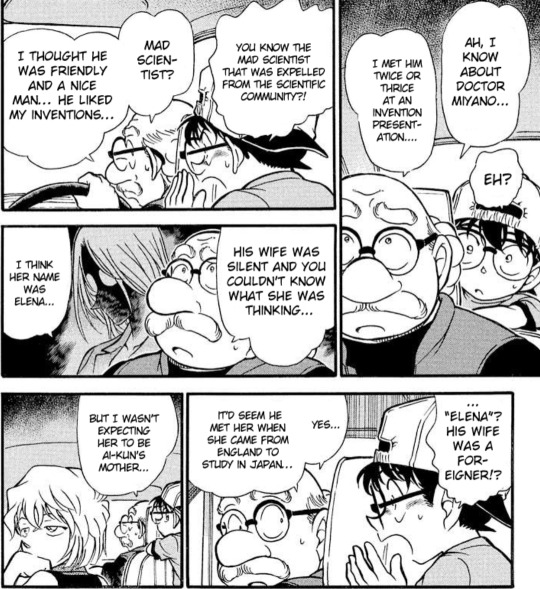
I suspect that we'll be getting a Police vs BO type of storyline, where Kuroda is leading the MPD (while hiding his awareness of the enemies' true identity) against the BO, lead by Rum. We might get some Kuroda vs Rum teasers in the movie as well (which would be fitting considering that there is likely a hidden history between them, if Kuroda is Tsutomu and also if Rum is Muga in disguise).

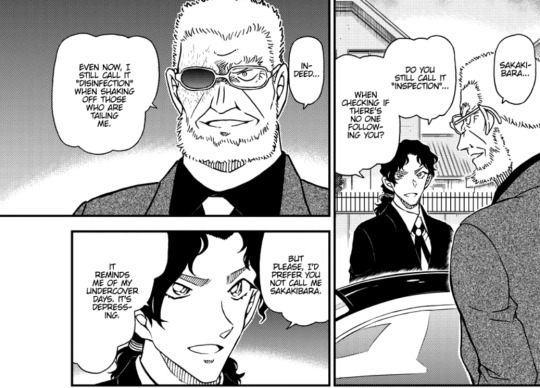
As for Sato being a spotlighted character among the cast, it could be that we get Sato-Amuro moments, where we get teasers to their past meeting (during WPS) in the movie.

As for Shiratori, just like how Kogoro-Eri were the romance spotlight of M22, Sonoko-Makoto were the romance spotlight of M23, Yumi-Shuukichi were the romance spotlight of M24 and Takagi-Sato were the romance spotlight of M25, I could see Shiratori-Kobayashi being the romance spotlight of M26.

#Detective Conan#Movie 26#Submarine#Sherry Movie#Haibara Ai#Shiratori ninzaburo#Sato Miwako#Kuroda Hyoue#Agasa Hiroshi#Edogawa Conan#Mouri Ran#Akai Shuuichi#Amuro Tooru#Bourbon#Furuya Rei#Kir#Mizunashi Rena#Hondou Hidemi#Vermouth#Chris Vineyard#Rum#Wakita Kanenori#Gin#Vodka#Chianti#Korn#black organization#Kobayashi Sumiko#Fusae Campbell#Miyano Akemi
35 notes
·
View notes
Text
DCMK Ship Meme
Here's my filled-out version of @/ natsunombrs_DC's DCMK ship meme from Twitter.

Explanation of each ship/line color:
Red:
A red line means that this is my all-time favorite ship, and I'm absolutely obsessed with it. Do I have a problem? Maybe. Am I going to do anything about it? Other than make more fan content for them, no.
Ship(s) under this color:
AkAm
Pink:
A pink line (or circle) means that while I'm not quite as obsessed with this ship, I still very much enjoy it.
Ship(s) under this color (not listed in any particular order):
Whiskey Trio
ScotchRye
HiroRei
Nagano Trio
Jodie x Camel
ShinRan
KaiShin
HeiKazu
Sato x Takagi
Sera x Ran
Sonoko x Ran
HagiMatsu
HeiShin
Matsuda x Rei
Kazuha x Ran
Yellow:
A yellow line can mean one of two things. Either I like a ship but not as much as the ships under the pink or red categories, or I don't know enough about one or all of the characters or their relationship in canon to have much of an opinion.
Ship(s) under this color (again, not listed in any particular order):
Rei x Kazami
Akai x Jodie
Akai x Kazami (I didn't actually mean to draw the line there, but when I thought about it, it's actually kind of a cool concept)
Sonoko x Makoto
CoAi (or Shinichi x Shiho)
Vermouth x Kir
Gin x Vodka
GinSherry
Kobayashi x Shiratori
Kogoro x Megure
Kogoro x Eri
Eri x Yukiko
Yusaku x Yukiko
Mary x Tsutomu
Vermouth x Yukiko
Gin x Vermouth
Green:
A green line (or circle) means that I enjoy the dynamic between the characters as a platonic relationship or a familial relationship.
Ship(s) and (found) families under this color:
Akai, Rei, Shinichi
Shinichi, Shiho/Haibara, Detective Boys, Agasa
Akai, Jodie, Camel
Akai siblings
Olive (you know, it would be nice if Tumblr had a few more text color options):
An olive line means that my opinion on a ship is somewhere between passively shipping and NOTP territory. While I don't like the ship, I also don't actively despise it, and I can still see why the ship appeals to others even if it doesn't to me.
Ship(s) under this color:
Akai x Akemi (I very much dislike ships between family members, but their relationship was so tragic in canon that I can't hate it entirely)
AkaiGin
AmuAzu (I do like them as friends, though, plus I've seen fan art for them and it's honestly pretty cute)
Sato x Matsuda
Black:
Self-explanatory, a black line means that the ship is a NOTP for me.
Ship(s) under this color:
Akai x Shiho (something about the idea of Akai finally moving past the dead woman he's still hung up on, only to start dating her sister does not sit entirely right with me)
Rei x Elena
Here's the original template if anyone wants it:
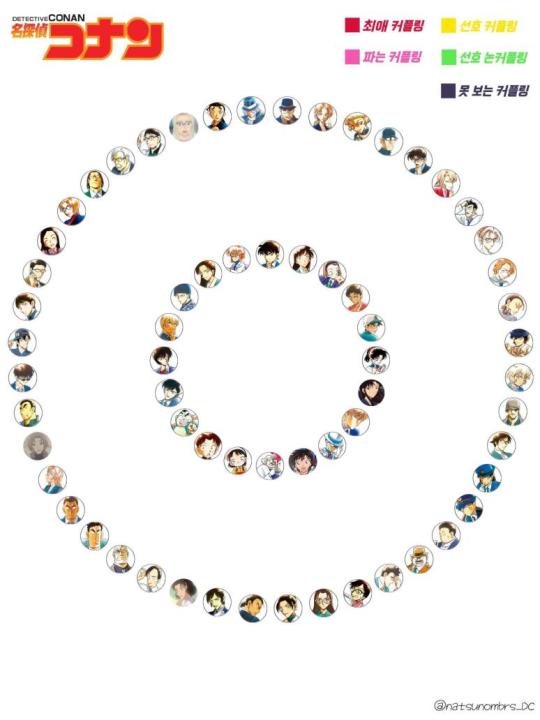
3 notes
·
View notes
Text
Exposed
Exposed
by Lea17
The dirty laundries finally got exposed.
Words: 3164, Chapters: 1/1, Language: English
Series: Part 23 of Cognac: NOC Nagano AU Snippets
Fandoms: 名探偵コナン | Detective Conan | Case Closed
Rating: Teen And Up Audiences
Warnings: Creator Chose Not To Use Archive Warnings, No Archive Warnings Apply
Categories: M/M
Characters: Kai Kuroto, League of Villains, Class 1-A, Kendou Itsuka, Tetsutetsu Tetsutetsu, Aizawa Shouta | Eraserhead, Yamada Hizashi | Present Mic, Shirakumo Oboro, Kayama Nemuri | Midnight, Todoroki Siblings, Nakamori Aoko, Mouri Ran, Tooyama Kazuha, Takami Keigo | Hawks, Shinsou Hitoshi, Yagi Toshinori | All Might, Ano Kata | Karasuma Renya, Vermouth (Meitantei Conan), Chianti (Meitantei Conan), Korn (Meitantei Conan), Vodka (Meitantei Conan), Gin (Meitantei Conan), Nakamori Ginzou, Megure Juuzou, Kuroba Touichi, Kuroba Chikage, Kudou Yukiko, Kudou Yuusaku, Kisaki Eri, Mouri Kogorou, Akai Tsutomu, Mary Sera, Date Wataru, Takagi Wataru, Chiba Kazunobu
Relationships: Dabi | Todoroki Touya/Takami Keigo | Hawks
Additional Tags: Child Neglect, Past Child Abuse, Suicide Attempt, Hurt/Comfort
Read Here: https://archiveofourown.org/works/43256991
#AO3 Feed#FanFiction#AO3 Hotwings#♠#Dabihawks#Hotwings#Kai Kuroto#⚣#R:T#W:S#A:Lea#Crossover#Mental Illness
0 notes
Photo


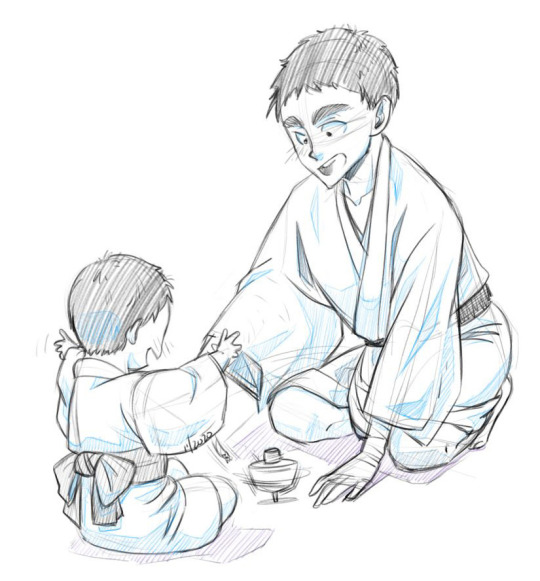

A few sketches from over the past month? Doodles that I make during work meetings. XD
34 notes
·
View notes
Video
youtube
Star Wars: Visions | Original English Dub Trailer
youtube
Japanese with English subtitles version
All anime shorts will stream on Disney+ on September 22, 2021.
Shorts:
Kamikaze Douga - The Duel
Geno Studio (Twin Engine) - Lop and Ochō
Studio Colorido (Twin Engine) - Tatooine Rhapsody
Trigger - The Twins
Trigger - The Elder
Kinema Citrus - The Village Bride
Science Saru - Akakiri
Science Saru - T0-B1
Production IG - The Ninth Jedi
English and Japanese Cast
The Duel:
Ronin: Brian Tee / Masaki Terasoma
Bandit Leader: Lucy Liu / Akeno Watanabe
Village Chief: Jaden Waldman / Yūko Sanpei
Tatooine Rhapsody:
Jay: Joseph Gordon-Levitt / Hiroyuki Yoshino
Geezer: Bobby Moynihan / Kōusuke Gotō
Boba Fett: Temuera Morrison / Akio Kaneda
K-344: Shelby Young / Masayo Fujita
Lan: Marc Thompson / Anri Katsu
The Twins:
Karre: Neil Patrick Harris / Junya Enoki
Am: Alison Brie / Ryoko Shiraishi
B-20N: Jonathan Lipow / Tokuyoshi Kawashima
The Village Bride:
F: Karen Fukuhara / Asami Seto
Haru: Nichole Sakura / Megumi Han
Asu: Christopher Sean / Yūma Uchida
Valco (Vaan): Cary-Hiroyuki Tagawa / Takaya Kamikawa
Izuma: Andrew Kishino / Yoshimitsu Shimoyama
Saku: Stephanie Sheh / Mariya Ise
The Ninth Jedi:
Kara: Kimiko Glenn / Chinatsu Akasaki
Juro: Andrew Kishino / Tetsuo Kanao
Zhima: Simu Liu / Shin-ichiro Miki
Ethan: Masi Oka / Hiromu Mineta
Roden: Greg Chun / Kazuya Nakai
Narrator: Neil Kaplan / Akio Ōtsuka
Hen Jin: Michael Sinterniklaas / Daisuke Hirakawa
T0-B1:
T0-B1 as Jaden Waldman / Masako Nozawa
Mitaka as Kyle Chandler / Tsutomu Isobe
The Elder:
Tajin: David Harbour / Takaya Hashi
Dan: Jordan Fisher / Yuichi Nakamura
The Elder: James Hong / Kenichi Ogata
Lop & Ocho:
Lop: Anna Cathcart / Seiran Kobayashi
Ocho: Hiromi Dames / Risa Shimizu
Yasaburo: Paul Nakauchi / Tadahisa Fujimura
Imperial Officer: Kyle McCarley / Taisuke Nakano
Akakiri:
Tsubaki: Henry Golding / Yū Miyazaki
Misa: Jamie Chung / Lynn
Senshuu: George Takei / Chō
Kamahachi: Keone Young / Wataru Takagi
Masago: Lorraine Toussaint / Yukari Nozawa
#Star Wars Visions#SW Visions#Star Wars#Kamikaze Douga#Geno Studio#Studio Colorido#Studio Trigger#Disney#Disney Plus#Kinema Citrus#Science Saru#Production I.G#television#anime#shorts#anime shorts
267 notes
·
View notes
Photo

[Update] ミュージカル「ピオフィオーレの晩鐘」(musical piofiore no banshou)
cast update under the cut^^
Cast:
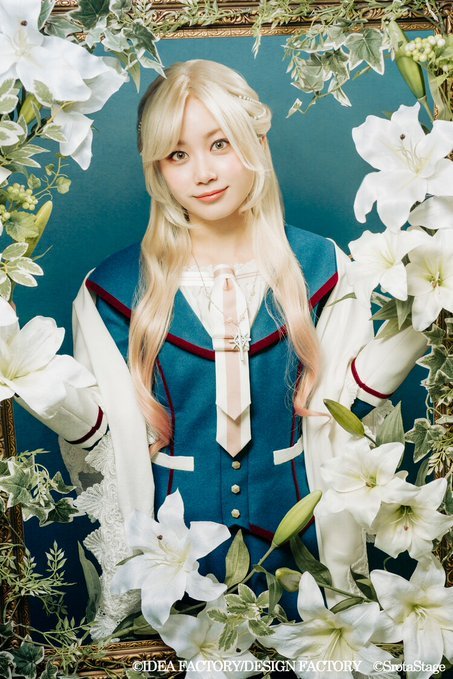
Itou Yui as Liliana Adornato (リリアーナ・アドルナート)

Shinzato Kouta as Dante Falzone (ダンテ・ファルツォーネ)

Satonaka Masamichi as Gilbert Redfort (ギルバート・レッドフォード)

Yokoi Shoujirou as Yang (楊)

Chiba Mizuki as Nicola Francesca (ニコラ・フランチェスカ)

Nagae Ryouki as Orlok (オルロック)

Iwata Haruki as Lan (ラン)

Yamauchi Yuka as Fei (フェイ)

Tomizono Rikiya as Leo Cavagnis (レオ・カヴァニス)

Satou Hiroki as Oliver Haas (オリヴァー・ハース)
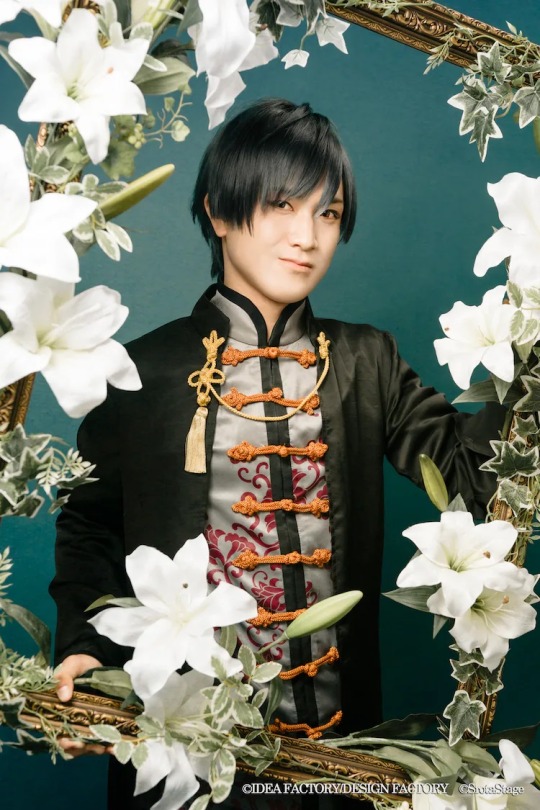
Takagi Shunsuke as Lee Hsi-shan (リー・シーシャン)
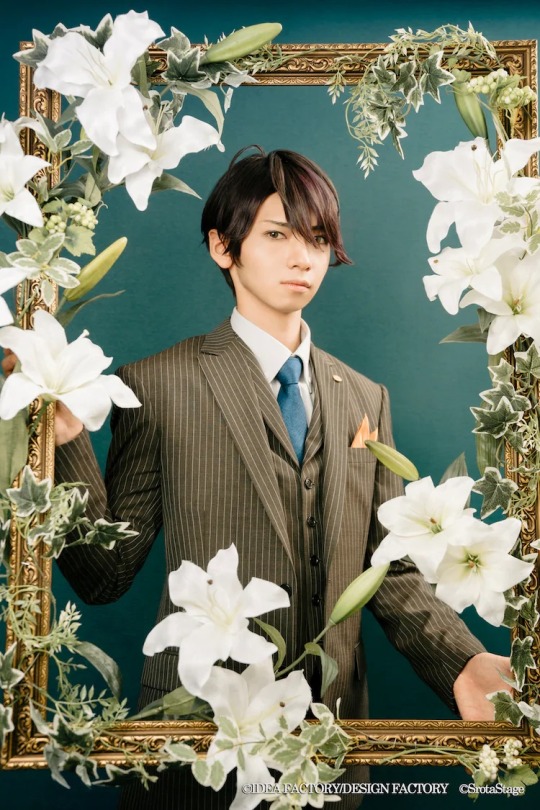
Kudou Hiromu as Roberto de Feo (ロベルト・デ・フェオ)

Horinouchi Hitoshi as Emilio (エミリオ)
Okuda Tsutomu as Marco Calderoni (マルコ・カルデローニ)
Takano Kenya as Josef von Roseberg (ヨゼフ・フォン・ロズベルグ)
Takahashi Hanako as Sophia (ソフィア)
Kubo Sarina as ???

Washio Shuuto as Direttore (ディレットーレ)
homepage
twitter
natalie
#ピオフィオーレの晩鐘#piofiore no banshou#伊藤優衣#itou yui#新里宏太#shinzato kouta#里中将道#satonaka masamichi#横井翔二郎#yokoi shoujirou#千葉瑞己#chiba mizuki#長江崚行#nagae ryouki#岩田陽葵#iwata haruki#山内優花#yamauchi yuka#富園力也#tomizono rikiya#佐藤弘樹#satou hiroki#高木俊輔#takagi shunsuke#工藤大夢#kudou hiromu#堀之内仁#horinouchi hitoshi#鷲尾修斗#washio shuuto
34 notes
·
View notes
Text
Semi-Historical Saitou Page from the Old Site
The original page is no longer available, so I’m adding it to the archive.
--------
Most of the following below was written almost two years ago except the last few paragraphs. This is really more of a fangirl approach to history which I still add anyway because fans provide fuel for interest, whether they are fiction fans or history fans.
What's he really like? Well not as hot as RK Saitou but then again it's not fair to compare the two. I have grown a healthy respect for the historical version. The San-ban-tai Kumichou went through several name changes mostly because of the line of his work as a spy, first he was Yamaguchi Hajime, then Saitou Hajime (Shinsengumi), Inouhe Denpachi and finally Fujita Gorou. He was born to Yamaguchi Yuusuke and Masu. Well as most significant life starts out a bit shaky, he is rumored to have killed the son of a Retainer to the Shogun and thus left Tokyo, his hometown. He left behind his mother and father and his siblings Katsu (sister) and Hiroaki (brother). He also had a nice named Yuki.
He met Kondou (soon to be Commander of the Shinsengumi) in Tama and later on joined the Shinsengumi as a troop captain. He is described as a very good swordsman on par with Okita Souji who during the time was the best swordsman in the Shinsengumi. In history just like in Anime and the movies he did command the third troop and was trusted by Hijikata, so much so that he gave him the assignment to spy on Itou Kashitarou. Itou's group defected from the Shinsengumi and created what is considered to be one of the worst internal disturbance in Shinsengumi history. Historical Saitou fought valiantly in Toba-Fushimi, during the Seinan wars and the Boshin wars. He became part of the Tokyo Metropolitan Police. It is believed that it was Toshiyoshi Kawaji, a native of Satsuma who recruited Saitou into the TMPD. After serving the TMPD (and rising up in the ranks) he finally retired and became a Museum guard, teacher and traffic enforcer in a girl's school where his wife Tokio also worked.
There is also a rumor that before Tokio Takagi (his wife), he was involved with a woman older than him named Yaso during the war but she died. It is unclear whether she died of illness though. His marriage to Tokio Takagi was arranged and it is said that the Daimyo himself was the sponsor for the marriage. He had three sons named Tatsuo, Tsutomu and Tsuyoshi. The youngest, Tatsuo was actually adopted.
Correction on Tatsuo's adoption 9/8/04: There are new findings that Tatsuo was not actually an adopted son, he is actually the biological son of the Fujita's however he was adopted "out" of the family to the Numazawa family. It is believed that Tatsuo was adopted out to help preserve the Aizu as the Numazawa's were retainers and Tokio and Hajime had strong ties with the Aizu clan. However there is debate if this was the only reason. There might've been more to the adoption, it is most probable that during the time Saitou Hajime (Fujita Gorou) was a prisoner of war the Numazawa's probably helped him during the time. The Numazawa's approached the Fujita family and probably asked the Fujita's to bear a child for them to adopt, citing Hajime's indebtedness while he was a POW.
Personality wise there is not much said or known about the man. Again it is rumored that there are family records and Shinsengumi records which are still in possession by the family and has not been made public up to now. We do know that he is fond of drinking (which ultimately led to his death - he died in a Seiza position by the way), a very quiet man as described by his brother in law and washed and stretched his fudonshi everyday. For those who do not know what a fudonshi is, it's underwear. Now don't laugh, this is actually a very good thing, because it points to cleanliness. Now who wouldn't want an intelligent (yes he must be intelligent because he served as a spy), skillful (fighting skills) and CLEAN man? Ladies?
I don't care much for the facial features of the real Saitou Hajime. Some say that he has a face only a mother could love but I'll let you be the judge of that. He was rather tall almost 6 feet. Some say he was "stocky" but later on put on some weight (later in his Museum guarding days). A couple of other downsides was that as I've mentioned before he drank quite a lot and there is an account that he is fickle when it came to women (I'm still waiting for more info on this). So there you have it a no holds barred low down on the real Saitou Hajime.
How did Saitou Hajime die?
Well he never did in the world of Anime, Manga and Fiction (at least my fanfiction ^_^ )... But for the curious let me detail to you what happened in history.
September 28, 1915, Saitou Hajime died at the age of 72. As I wrote earlier he was fond of drinking and this is the cause of his death. As he realized that his time was near, he asked his family to move him to an alcove, there he sat "Seiza" and awaited his death while his daughter-in-law Midori (Tsutomu's wife), continuously removed phlegm from his throat by chopsticks and some cotton balls. Note how he died in "Seiza", this means sitting on your heels with your back straight, this requires continuous presence of mind and discipline as it is a formal way of sitting. He did all this until the moment of his death, this not only pointed to his self-discipline and control but also his awareness of the Mugai Ryu. Mugai Ryu is his swordsman style and it advocates to continuously challenge oneself. Being in "Seiza" until death shows his dedication as a Mugai Ryu swordsman.
Let's sum this up... Obviously what I wrote above is just a short summary and highly incomplete history on the real man. My focus has always been Saitou Hajime in popular culture since my first love will always be RK Saitou. However if you love RK Saitou then you owe it to him, and his creator and yourself to know about the real man. And maybe you can use what you know in history to give RK Saitou or any other fictional rendition of the wolf more depth. Oh don't get me wrong RK Saitou is deep but only if you read between the lines....
Takagi Tokio (Fujita Tokio)
Recently the Shinsengumi community has had a flurry of information relating to Takagi Tokio, Fujita Goro's wife. Takagi Tokio is an adopted daughter of the Kurasawa family and had a brother named Morinosuke. She was once a lady in waiting of Teruhime, wife of Matsudaira Katamori in Aizu. Later on she would meet Saitou Hajime and marry him have three children and live their lives in Tokyo. In Tokyo she would become part of the Normal School for Women through courtesy of her cousin Takamine Hideo. She worked there as a dorm mother. Later on in life, after Fujita Goro's resignation from the Tokyo Metropolitan Police Department, he will join Tokio teaching in the same school, today known as Ochanomizu. She also worked in Yasuda bank. I would recommend that you find out more about her.
Addendum: 02/19/2006
There's no English book out yet for Saitou Hajime, however there is one for the Shinsengumi by Romulus Hillsborough ISBN: 0804836272. Some would regard his work as having leanings but that's what we have and I think it is good that he considered it more like historical fiction.
Shizuko Akama wrote several books about Saitou (i.e. ISBN: 4404025998 and ISBN: 4404026269). She is a life-long researcher of our wolf! Some would regard her work as having the elements of historical fiction. To be quite frank, I think that's good to bear in mind.
Try to get a hold of Remembering Aizu by Shiba Goro. It's good but keep in mind that the author is too close to the subject as well. Think of Nagakura's book (wrote it himself) where (it is said that) he's described himself a bit too good.
My favorite Saitou Site on the web is 1to5.net and the old 3-hajime site. You'll have to use a Japanese translator like nifty or babelfish.
Visit ShinsengumiHQ for more info as well.
3 notes
·
View notes
Text
New Star Wars: Visions Trailer Revealed Along with English and Japanese Voice Casts
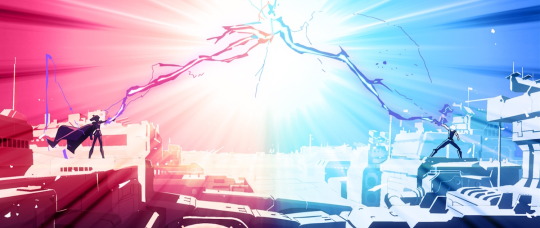
Following up on the big studio reveals in July, Disney has a new trailer for the Star Wars: Visions anthology. In addition to showing off the work of studios Kamikaze Douga (The Duel), Geno Studio (Lop & Ocho), Studio Colorido (Tatooine Rhapsody), TRIGGER (The Twins, The Elder), Kinema Citrus (The Village Bride), Science SARU (Akakiri, T0-B1), and Production I.G (The Ninth Jedi), the latest update includes voice cast announcements for both English and Japanese languages.
English trailer:
youtube
Cast:
The Duel:
Brian Tee (Ronin)
Lucy Liu (Bandit Leader)
Jaden Waldman (Village Chief)
Tatooine Rhapsody:
Joseph Gordon-Levitt (Jay)
Bobby Moynihan (Geezer)
Temuera Morrison (Boba Fett)
Shelby Young (K-344)
Marc Thompson (Lan)
The Twins:
Neil Patrick Harris (Karre)
Alison Brie (Am)
Jonathan Lipow (B-20N)
The Village Bride:
Karen Fukuhara (F)
Nichole Sakura (Haru)
Christopher Sean (Asu)
Cary-Hiroyuki Tagawa (Valco)
Andrew Kishino (Izuma)
Stephanie Sheh (Saku)
The Ninth Jedi:
Kimiko Glenn (Kara)
Andrew Kishino (Juro)
Simu Liu (Zhima)
Masi Oka (Ethan)
Greg Chun (Roden)
Neil Kaplan (Narrator)
Michael Sinterniklaas (Hen Jin)
T0-B1:
Jaden Waldman (T0-B1)
Kyle Chandler (Mitaka)
The Elder:
David Harbour (Tajin)
Jordan Fisher (Dan)
James Hong (The Elder)
Lop & Ocho:
Anna Cathcart (Lop)
Hiromi Dames (Ocho)
Paul Nakauchi (Yasaburo)
Kyle McCarley (Imperial Officer)
Akakiri:
Henry Golding (Tsubaki)
Jamie Chung (Misa)
George Takei (Senshuu)
Keone Young (Kamahachi)
Lorraine Toussaint (Masago)
Japanese trailer:
youtube
Cast:
The Duel:
Masaki Terasoma (Ronin)
Akeno Watanabe (Bandit Leader)
Yūko Sanpei (VillageChief)
Tatooine Rhapsody:
Hiroyuki Yoshino (Jay)
Kōusuke Gotō (Geezer)
Akio Kaneda (Boba Fett)
Masayo Fujita (K-344)
Anri Katsu (Lan)
The Twins:
Junya Enoki (Karre)
Ryoko Shiraishi (Am)
Tokuyoshi Kawashima (B-20N)
The Village Bride:
Asami Seto (F)
Megumi Han (Haru)
Yūma Uchida (Asu)
Takaya Kamikawa(Vaan)
Yoshimitsu Shimoyama (Izuma)
Mariya Ise (Saku)
The Ninth Jedi:
Chinatsu Akasaki(Kara)
Tetsuo Kanao (Juro)
Shin-ichiro Miki (Zhima)
Hiromu Mineta (Ethan)
Kazuya Nakai (Roden)
Akio Ōtsuka, (Narrator)
Daisuke Hirakawa (Hen Jin)
T0-B1:
Masako Nozawa (T0-B1)
Tsutomu Isobe (Mitaka)
The Elder:
Takaya Hashi (Tajin)
Kenichi Ogata (The Elder)
Yuichi Nakamura (Dan)
Lop & Ocho:
Seiran Kobayashi (Lop)
Risa Shimizu (Ocho)
Tadahisa Fujimura (Yasaburo)
Taisuke Nakano (Imperial Officer)
Akakiri:
Yū Miyazaki (Tsubaki)
Lynn (Misa)
Chō (Senshuu)
Wataru Takagi (Kamahachi)
Yukari Nozawa (Masago)
Star Wars: Visions premieres on Disney+ on September 22.
Source: Press release

-------
Joseph Luster is the Games and Web editor at Otaku USA Magazine. You can read his comics at subhumanzoids. Follow him on Twitter @Moldilox.
By: Joseph Luster
4 notes
·
View notes
Text
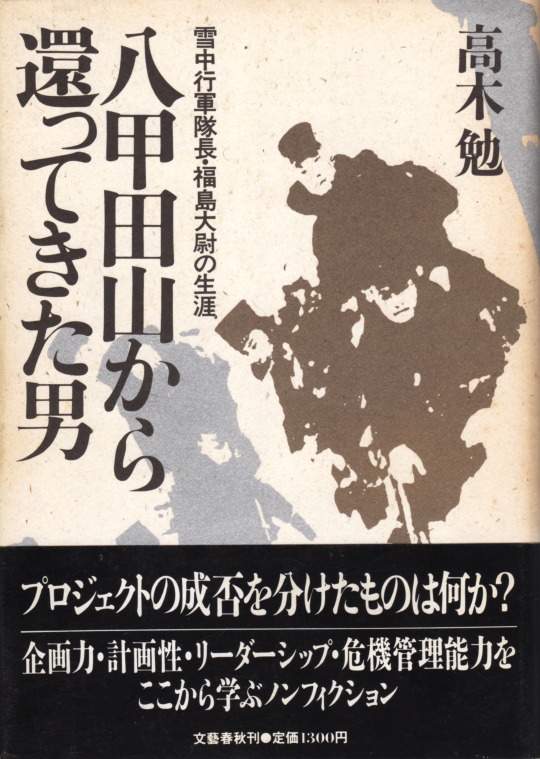
八甲田山から還ってきた男-雪中行軍隊長・福島大尉の生涯
高木勉
文藝春秋
装幀=倉田明典
3 notes
·
View notes
Note
Do you ship any other characters in Detective Conan other than Shuuichi x Jodie? p/s: I like Shuuichi x Jodie too XP
Hello anon!
First of all, 1.000.000.000 kudos for you just because you ship the best couple of Detective Conan! ;)
Yes, there are also other couples I ship but I don’t feel so attached to them as I’m with Jodie and Shuichi. We can say I ship all the canon and classical couples, but the ones I prefer are:
- Yui and Kansuke
- Eri and Kogoro
- Yukiko and Yusaku
- Mary and Tsutomu (we have seen just a little of their relationship but GOOOOD, they way she cried when she realized that the man she met wasn’t Tsutomu but someone disguised broke my heart...)
I prefer the adult relationships to be honest, maybe because at 28 years old I’m not used anymore to teenage love stories LOL XD
The other couples I ship are the classical I said (Shinichi and Ran, Sato and Takagi ecc.).
I also like Fusae and Agasa and I would like to see more of them.
Last but not least...ok, don’t laugh at me but I ship Shiho with Higo XD
Thanks for asking! ♥
8 notes
·
View notes
Text
Instagram Post Translations: August 10th-August 18th, 2019
Enjoy, and please don’t repost without credit!
<3
<3
GAORA SPORTS
I Want to Talk to Someone!! Fighters Quiz 2019 Summer
August 12th from 12pm~1pm
Appearing: Iwamoto Tsutomu-san, Tonikaku Akarui Yasumura-san, Aragaki Hayato, Morning Musume '19's Makino Maria
Please definitely check out the repeat airing!!!!
We got a message from Sugiura Toshihiro *
Let's dance together with Aragaki Hayato
A winning dance
♪ Pomeranian wan wan ♪...
<3
<3
#gaorasports
#hokkaidonipponhamfighters
#gaora
#lovefighters
#iwamototsutomu-san<3
#tonikakuakaruiyasumura-san *
#sugiuratoshihiro
#aragakihayatopitchingcoach
#toshibabaseballclub
#morningmusume19
---
<3
<3
♪ Young oh! oh! ♪
GLAY <3
<3
<3
#morningmusume19
---
<3
<3
Yaguchi Mari-san
Congratulations on giving birth *
So Yaguchi-san's baby-chama will think, I love Morning Musume <3... Makino Maria will do my best!
<3
<3
#yaguchimari-san<3
#morningmusume
#morningmusume19
---
<3
<3
* <3 Ikuta Erina-san special <3 *
Nakata group <3
Ikuta group <3
Nakata award *
Ikuta award * <- Maria-chan's idea
To be continued
<3
<3
#ikutaerina-san <3
#eriponkawaii
#morningmusume19
---
<3
<3
I went to lunch with my family friends <3
From there,
Tapioca <3
Since we were small...
Next time, let's go to Disneyland together, okay *
<3
<3
#morningmusume19
---
<3
<3
The players and the fans are a team!
We're one team!
<3
<3
#lovefighters
#hokkaidonipponhamfighters
#gaorasports
#HBCradio
#morningmusume19
---
<3
<3
<3 TOURS Musical "Akage no Anne" <3
<3
<3
#tanakareina-san <3
#stc
#akagenoanne
#morningmusume19
---
<3
<3
Putting our feelings into it <3
<3
<3
#lovefighters
#hokkaidonipponhamfighters
#nakatashou<3
#gaorasports
#HBCradio
#morningmusume19
---
<3
<3
* "Downtown DX" *
Yomiuri TV
August 15th at 10pm~
Please definitely watch it
<3
<3
---
#yomiuritv
#downtownDX
#hamadamasao-san <3
#matsumotohiroshi-san<3
#downtown-san
#ayakojishou-san
#rshitei-san #CreepyNuts-san
#ozakiyuuka-san
#kawaifumito-san #ABCZ
#kiyozukashinya-san
#chiharu-san
#fujimakiryouta-san
#martyfriedman-san
#mizutanichieko-san
#morimasako-san
#ishidaayumi-san
#makinomaria
#morningmusume19
---
<3
<3
Let's go to the bluest sky <3
<3
<3
#lovefighters
#hokkaidonipponhamfighters
#tanakakensuke <3
#gaorasports
#HBCradio
#morningmusume19
---
<3
<3
NHK-FM
* "Today is the Day of "Hello Pro" Spree" *
August 16th
12:20am~6:50am
7:30am~9:30am
Definitely listen to it, okay <3
<3
<3
#NHKFM
#helloprospree
#helloproject
#chibaminoriannouncer
#fukumuramizuki-san
#morningmusume19
---
<3
<3
<3 Tanaka Reina-sam <3
* TOURS Musical "Akage no Anne" *
I asked Tanaka Reina-san to send me a photo
Cute <3 <3 Tanaka-san
Tanaka Reina-san is too super cute <3
Okay
<3
<3
#tanakareina-san <3
#ESC
#akagenoanne
#morningmusume19
---
<3
<3
You're listening to the Fighters on HBC
August 15th, 2019 at Tokyo Dome
<3
<3
#HBCRadio
#iwamototsutomu-san <3
#lovefighters
#hokkaidonipponhamfighters
#morningmusume19
---
<3
<3
You're watching the Fighters on Gaora Sports
August 15th, 2019 at Tokyo Dome
<3
<3
#gaorasports
#GAORA
#morimotohichori-san<3
#kondouyuuji-san
#lovefighters
#hokkaidonipponhamfighters
#morningmusume19
---
<3
<3
Takagi Sayuki-san's first photobook <3
* "Sayuki" *
<3
<3
#takagisayuki-san<3
#juicejuice
#sayuki
#photobook
#morningmusume19
#makino maria#morning musume#morning musume 19#hello project#instagram post translation#insta august 2019
1 note
·
View note
Text
GODZILLA wiki
Godzilla
From Wikipedia, the free encyclopedia
This article is about the monster. For the film franchise, see Godzilla (franchise). For other uses, see Godzilla (disambiguation).
"ゴジラ" redirects here. For other uses of "Gojira", see Gojira (disambiguation).
‹ The template Infobox character is being considered for merging. ›
Godzilla
Godzilla film series character
Godzilla '54 design.jpg
Godzilla as featured in the original 1954 film
First appearance Godzilla (1954)
Created by
Tomoyuki Tanaka
Ishirō Honda
Eiji Tsubaraya
Portrayed by
Shōwa era:
Haruo Nakajima[1]
Katsumi Tezuka[2]
Hiroshi Sekida[3]
Seiji Onaka[3]
Shinji Takagi[4]
Isao Zushi[5]
Toru Kawai[5]
Hanna-Barbera:
Ted Cassidy (vocal effects)[6][7]
Heisei era:
Kenpachiro Satsuma[8]
Millennium era:
Tsutomu Kitagawa[9]
Mizuho Yoshida[10]
Shin Godzilla:
Mansai Nomura[11]
TriStar Pictures:
Kurt Carley[12]
Frank Welker (vocal effects)[13]
Legendary Pictures:
T.J. Storm[14][15]
Designed by
Akira Watanabe
Teizô Toshimitsu[16]
Information
Alias
The King of the Monsters[17]
Gigantis[18]
Monster Zero-One[19]
The God of Destruction[20][21]
Species Prehistoric amphibious reptile
Family Minilla and Godzilla Junior (adopted sons)
Godzilla (Japanese: ゴジラ Hepburn: Gojira) (/ɡɒdˈzɪlə/; [ɡoꜜdʑiɾa] (About this soundlisten)) is a monster originating from a series of Japanese films of the same name. The character first appeared in Ishirō Honda's 1954 film Godzilla and became a worldwide pop culture icon, appearing in various media, including 32 films produced by Toho, three Hollywood films and numerous video games, novels, comic books and television shows. It is dubbed the King of the Monsters, a phrase first used in Godzilla, King of the Monsters!, the Americanized version of the original film.
Godzilla is depicted as an enormous, destructive, prehistoric sea monster awakened and empowered by nuclear radiation. With the nuclear bombings of Hiroshima and Nagasaki and the Lucky Dragon 5 incident still fresh in the Japanese consciousness, Godzilla was conceived as a metaphor for nuclear weapons.[22] As the film series expanded, some stories took on less serious undertones, portraying Godzilla as an antihero, or a lesser threat who defends humanity. With the end of the Cold War, several post-1984 Godzilla films shifted the character's portrayal to themes including Japan's forgetfulness over its imperial past,[23] natural disasters and the human condition.[24]
Godzilla has been featured alongside many supporting characters. It has faced human opponents such as the JSDF, or other monsters, including King Ghidorah, Gigan and Mechagodzilla. Godzilla sometimes has allies, such as Rodan, Mothra and Anguirus, and offspring, such as Minilla and Godzilla Junior. Godzilla has also fought characters from other franchises in crossover media, such as the RKO Pictures/Universal Studios movie monster King Kong and the Marvel Comics characters S.H.I.E.L.D.,[25] the Fantastic Four[26] and the Avengers.[27]
Contents
1 Overview
1.1 Name
1.2 Characteristics
1.3 Roar
1.4 Size
1.5 Special effects details
2 Appearances
3 Cultural impact
3.1 Cultural ambassador
4 References
4.1 Sources
5 External links
Overview
Name
Gojira (ゴジラ) is a portmanteau of the Japanese words: gorira (ゴリラ, "gorilla") and kujira (鯨クジラ, "whale"), which is fitting because in one planning stage, Godzilla was described as "a cross between a gorilla and a whale",[28] alluding to its size, power and aquatic origin. One popular story is that "Gojira" was actually the nickname of a corpulent stagehand at Toho Studio.[29] Kimi Honda, the widow of the director, dismissed this in a 1998 BBC documentary devoted to Godzilla, "The backstage boys at Toho loved to joke around with tall stories".[30]
Godzilla's name was written in ateji as Gojira (呉爾羅), where the kanji are used for phonetic value and not for meaning.[citation needed] The Japanese pronunciation of the name is [ɡoꜜdʑiɾa] (About this soundlisten); the Anglicized form is /ɡɒdˈzɪlə/, with the first syllable pronounced like the word "god" and the rest rhyming with "gorilla". In the Hepburn romanization system, Godzilla's name is rendered as "Gojira", whereas in the Kunrei romanization system it is rendered as "Gozira".[citation needed]
During the development of the American version of Godzilla Raids Again (1955), Godzilla's name was changed to "Gigantis", a move initiated by producer Paul Schreibman, who wanted to create a character distinct from Godzilla.[31]
Characteristics
Every film incarnation of Godzilla between 1954 and 2017
Within the context of the Japanese films, Godzilla's exact origins vary, but it is generally depicted as an enormous, violent, prehistoric sea monster awakened and empowered by nuclear radiation.[32] Although the specific details of Godzilla's appearance have varied slightly over the years, the overall impression has remained consistent.[33] Inspired by the fictional Rhedosaurus created by animator Ray Harryhausen for the film The Beast from 20,000 Fathoms,[34] Godzilla's iconic character design was conceived as that of an amphibious reptilian monster based around the loose concept of a dinosaur[35] with an erect standing posture, scaly skin, an anthropomorphic torso with muscular arms, lobed bony plates along its back and tail, and a furrowed brow.[36] Art director Akira Watanabe combined attributes of a Tyrannosaurus, an Iguanodon, a Stegosaurus and an alligator[37] to form a sort of blended chimera, inspired by illustrations from an issue of Life magazine.[38] To emphasise the monster's relationship with the atomic bomb, its skin texture was inspired by the keloid scars seen on survivors in Hiroshima.[39] The basic design has a reptilian visage, a robust build, an upright posture, a long tail and three rows of serrated plates along the back. In the original film, the plates were added for purely aesthetic purposes, in order to further differentiate Godzilla from any other living or extinct creature. Godzilla is sometimes depicted as green in comics, cartoons and movie posters, but the costumes used in the movies were usually painted charcoal grey with bone-white dorsal plates up until the film Godzilla 2000.[40]
Godzilla's atomic heat beam, as shown in Godzilla (1954)
Godzilla's signature weapon is its "atomic heat beam", nuclear energy that it generates inside of its body and unleashes from its jaws in the form of a blue or red radioactive beam.[41] Toho's special effects department has used various techniques to render the beam, from physical gas-powered flames[42] to hand-drawn or computer-generated fire. Godzilla is shown to possess immense physical strength and muscularity. Haruo Nakajima, the actor who played Godzilla in the original films, was a black belt in judo and used his expertise to choreograph the battle sequences.[43] Godzilla can breathe underwater[41] and is described in the original film by the character Dr. Yamane as a transitional form between a marine and a terrestrial reptile. Godzilla is shown to have great vitality: it is immune to conventional weaponry thanks to its rugged hide and ability to regenerate[44] and as a result of surviving a nuclear explosion, it cannot be destroyed by anything less powerful. Various films, television shows, comics and games have depicted Godzilla with additional powers, such as an atomic pulse,[45] magnetism,[46] precognition,[47] fireballs,[48] an electric bite,[49] superhuman speed,[50] eye beams[51] and even flight.[52]
Godzilla's allegiance and motivations have changed from film to film to suit the needs of the story. Although Godzilla does not like humans,[53] it will fight alongside humanity against common threats. However, it makes no special effort to protect human life or property[54] and will turn against its human allies on a whim. It is not motivated to attack by predatory instinct: it does not eat people[55] and instead sustains itself on nuclear radiation[56] and an omnivorous diet.[57] When inquired if Godzilla was "good or bad", producer Shogo Tomiyama likened it to a Shinto "God of Destruction" which lacks moral agency and cannot be held to human standards of good and evil. "He totally destroys everything and then there is a rebirth. Something new and fresh can begin."[55]
Godzilla battles King Kong in King Kong vs. Godzilla (1962). This film has the highest Japanese box office attendance figures in the entire Godzilla series to date.[58]
In the original Japanese films, Godzilla and all the other monsters are referred to with gender-neutral pronouns equivalent to "it",[59] while in the English dubbed versions, Godzilla is explicitly described as a male, such as in the title of Godzilla, King of the Monsters!. The creature in the 1998 Godzilla film was depicted laying eggs through parthenogenesis.[60][61][62]
Roar
Godzilla has a distinctive disyllabic roar (transcribed in several comics as Skreeeonk!),[63][64] which was created by composer Akira Ifukube, who produced the sound by rubbing a pine-tar-resin-coated glove along the string of a contrabass and then slowing down the playback.[65] In the American version of Godzilla Raids Again (1955) entitled Gigantis the Fire Monster, Godzilla's iconic roar was substituted with that of the monster Anguirus.[31] From The Return of Godzilla (1984) to Godzilla vs. King Ghidorah (1991), Godzilla was given a deeper and more threatening-sounding roar than in previous films, though this change was reverted from Godzilla vs. Mothra (1992) onwards.[66] For the 2014 American film, sound editors Ethan Van der Ryn and Erik Aadahl refused to disclose the source of the sounds used for their Godzilla's roar.[65] Aadahl described the two syllables of the roar as representing two different emotional reactions, with the first expressing fury and the second conveying the character's soul.[67]
Size
Godzilla's size is inconsistent, changing from film to film, and even from scene to scene, for the sake of artistic license.[55] The miniature sets and costumes were typically built at a 1⁄25–1⁄50 scale[68] and filmed at 240 frames per second to create the illusion of great size.[69] In the original 1954 film, Godzilla was scaled to be 50 m (164 ft) tall.[70] This was done so Godzilla could just peer over the largest buildings in Tokyo at the time.[2] In the 1956 American version, Godzilla is estimated to be 122 m (400 ft) tall, because producer Joseph E. Levine felt that 50 m did not sound "powerful enough".[71] As the series progressed Toho would rescale the character, eventually making Godzilla as tall as 100 m (328 ft).[72] This was done so that it would not be dwarfed by the newer, bigger buildings in Tokyo's skyline, such as the 243-meter-tall (797 ft) Tokyo Metropolitan Government Building which Godzilla destroyed in the film Godzilla vs. King Ghidorah (1991). Supplementary information, such as character profiles, would also depict Godzilla as weighing between 20,000 and 60,000 metric tons (22,000 and 66,000 short tons).[70][72] In the American film Godzilla (2014) from Legendary Pictures, Godzilla was scaled to be 108.2 m (355 ft) and weighing 90,000 metric tons (99,000 short tons), making it the largest film version at that time.[73] Director Gareth Edwards wanted Godzilla "to be so big as to be seen from anywhere in the city, but not too big that he couldn't be obscured".[74] For Shin Godzilla (2016), Godzilla was made even taller than the Legendary version, at 118.5 m (389 ft).[75][76] In Godzilla: Planet of the Monsters, Godzilla's height was increased further still to 300 m (984 ft).[77]
Special effects details
Suit fitting on the set of Godzilla Raids Again (1955), with Haruo Nakajima portraying Godzilla on the left
Godzilla's appearance has traditionally been portrayed in the films by an actor wearing a latex costume, though the character has also been rendered in animatronic, stop-motion and computer-generated form.[78][79]
Taking inspiration from King Kong, special effects artist Eiji Tsuburaya had initially wanted Godzilla to be portrayed via stop-motion, but prohibitive deadlines and a lack of experienced animators in Japan at the time made suitmation more practical. The first suit consisted of a body cavity made of thin wires and bamboo wrapped in chicken wire for support and covered in fabric and cushions, which were then coated in latex. The first suit was held together by small hooks on the back, though subsequent Godzilla suits incorporated a zipper. Its weight was in excess of 100 kg (220 lb).[40] Prior to 1984, most Godzilla suits were made from scratch, thus resulting in slight design changes in each film appearance.[80] The most notable changes during the 1960s-70s were the reduction in Godzilla's number of toes and the removal of the character's external ears and prominent fangs, features which would later be reincorporated in the Godzilla designs from The Return of Godzilla (1984) onward.[81] The most consistent Godzilla design was maintained from Godzilla vs. Biollante (1989) to Godzilla vs. Destoroyah (1995), when the suit was given a cat-like face and double rows of teeth.[82] Several suit actors had difficulties in performing as Godzilla, due to the suits' weight, lack of ventilation and diminished visibility.[40] Kenpachiro Satsuma in particular, who portrayed Godzilla from 1984 to 1995, described how the Godzilla suits he wore were even heavier and hotter than their predecessors because of the incorporation of animatronics.[83] Satsuma himself suffered numerous medical issues during his tenure, including oxygen deprivation, near-drowning, concussions, electric shocks and lacerations to the legs from the suits' steel wire reinforcements wearing through the rubber padding.[84] The ventilation problem was partially solved in the suit used in 1994's Godzilla vs. SpaceGodzilla, which was the first to include an air duct, which allowed suit actors to last longer during performances.[85] In The Return of Godzilla (1984), some scenes made use of a 16-foot high robotic Godzilla (dubbed the "Cybot Godzilla") for use in close-up shots of the creature's head. The Cybot Godzilla consisted of a hydraulically-powered mechanical endoskeleton covered in urethane skin containing 3,000 computer operated parts which permitted it to tilt its head and move its lips and arms.[86]
In Godzilla (1998), special effects artist Patrick Tatopoulos was instructed to redesign Godzilla as an incredibly fast runner.[87] At one point, it was planned to use motion capture from a human to create the movements of the computer-generated Godzilla, but it was said to have ended up looking too much like a man in a suit.[88] Tatopoulos subsequently reimagined the creature as a lean, digitigrade bipedal iguana-like creature that stood with its back and tail parallel to the ground, rendered via CGI.[89] Several scenes had the monster portrayed by stuntmen in suits. The suits were similar to those used in the Toho films, with the actors' heads being located in the monster's neck region, and the facial movements controlled via animatronics. However, because of the creature's horizontal posture, the stuntmen had to wear metal leg extenders, which allowed them to stand two meters (six feet) off the ground with their feet bent forward. The film's special effects crew also built a 1⁄6 scale animatronic Godzilla for close-up scenes, whose size outmatched that of Stan Winston's T. rex in Jurassic Park.[90] Kurt Carley performed the suitmation sequences for the adult Godzilla.[12]
In Godzilla (2014), the character was portrayed entirely via CGI. Godzilla's design in the reboot was intended to stay true to that of the original series, though the film's special effects team strove to make the monster "more dynamic than a guy in a big rubber suit."[91] To create a CG version of Godzilla, the Moving Picture Company (MPC) studied various animals such as bears, Komodo dragons, lizards, lions and gray wolves which helped the visual effects artists visualize Godzilla's body structure like that of its underlying bone, fat and muscle structure as well as the thickness and texture of its scale.[92] Motion capture was also used for some of Godzilla's movements. T.J. Storm provided the performance capture for Godzilla by wearing sensors in front of a green screen.[14]
In Shin Godzilla, a majority of the character was portrayed via CGI, with Mansai Nomura portraying Godzilla through motion capture.[11]
Appearances
Main article: Godzilla (franchise)
Further information: Godzilla (comics)
Cultural impact
Main article: Godzilla in popular culture
Godzilla's star on the Hollywood Walk of Fame
Godzilla is one of the most recognizable symbols of Japanese popular culture worldwide[93][94] and remains an important facet of Japanese films, embodying the kaiju subset of the tokusatsu genre. Godzilla's vaguely humanoid appearance and strained, lumbering movements endeared it to Japanese audiences, who could relate to Godzilla as a sympathetic character, despite its wrathful nature.[95] Audiences respond positively to the character because it acts out of rage and self-preservation and shows where science and technology can go wrong.[96]
In 1967, the Keukdong Entertainment Company of South Korea, with production assistance from Toei Company, produced Yongary, Monster from the Deep, a reptilian monster who invades South Korea to consume oil. The film and character has often been branded as a knock-off of Godzilla.[97][98]
Godzilla has been considered a filmographic metaphor for the United States, as well as an allegory of nuclear weapons in general. The earlier Godzilla films, especially the original, portrayed Godzilla as a frightening nuclear-spawned monster. Godzilla represented the fears that many Japanese held about the atomic bombings of Hiroshima and Nagasaki and the possibility of recurrence.[99] As the series progressed, so did Godzilla, changing into a less destructive and more heroic character as the films became geared more towards children. Since then, the character has fallen somewhere in the middle, sometimes portrayed as a protector of the world from external threats and other times as a bringer of destruction.[100][101]
In 1996, Godzilla received the MTV Lifetime Achievement Award,[102] as well as being given a star on the Hollywood Walk of Fame in 2004 to celebrate the premiere of the character's 50th anniversary film, Godzilla: Final Wars.[103] Godzilla's pop-cultural impact has led to the creation of numerous parodies and tributes, as seen in media such as Bambi Meets Godzilla, which was ranked as one of the "50 greatest cartoons",[104] two episodes of Mystery Science Theater 3000[105] and the song "Godzilla" by Blue Öyster Cult.[106] Godzilla has also been used in advertisements, such as in a commercial for Nike, where Godzilla lost an oversized one-on-one game of basketball to a giant version of NBA player Charles Barkley.[107] The commercial was subsequently adapted into a comic book illustrated by Jeff Butler.[108] Godzilla has also appeared in a commercial for Snickers candy bars, which served as an indirect promo for the 2014 movie. Godzilla's success inspired the creation of numerous other monster characters, such as Gamera,[109][110] Reptilicus of Denmark,[111] Yonggary of South Korea,[97] Pulgasari of North Korea,[112] Gorgo of the United Kingdom[113] and the Cloverfield monster of the United States.[114]
Godzilla's fame and saurian appearance has influenced the scientific community. Gojirasaurus is a dubious genus of coelophysid dinosaur, named by paleontologist and admitted Godzilla fan Kenneth Carpenter.[115] Dakosaurus is an extinct marine crocodile of the Jurassic Period, which researchers informally nicknamed "Godzilla".[116] Paleontologists have written tongue-in-cheek speculative articles about Godzilla's biology, with Ken Carpenter tentatively classifying it as a ceratosaur based on its skull shape, four-fingered hands and dorsal scutes, and paleontologist Darren Naish expressing skepticism while commenting on Godzilla's unusual morphology.[117]
Godzilla's ubiquity in pop-culture has led to the mistaken assumption that the character is in the public domain, resulting in litigation by Toho to protect their corporate asset from becoming a generic trademark. In April 2008, Subway depicted a giant monster in a commercial for their Five Dollar Footlong sandwich promotion. Toho filed a lawsuit against Subway for using the character without permission, demanding $150,000 in compensation.[118] In February 2011, Toho sued Honda for depicting a fire-breathing monster in a commercial for the Honda Odyssey. The monster was never mentioned by name, being seen briefly on a video screen inside the minivan.[119] The Sea Shepherd Conservation Society christened a vessel the MV Gojira. Its purpose is to target and harass Japanese whalers in defense of whales in the Southern Ocean Whale Sanctuary. The MV Gojira was renamed the MV Brigitte Bardot in May 2011, due to legal pressure from Toho.[120] Gojira is the name of a French death metal band, formerly known as Godzilla; legal problems forced the band to change their name.[121] In May 2015, Toho launched a lawsuit against Voltage Pictures over a planned picture starring Anne Hathaway. Promotional material released at the Cannes Film Festival used images of Godzilla.[122]
Steven Spielberg cited Godzilla as an inspiration for Jurassic Park (1993), specifically Godzilla, King of the Monsters! (1956), which he grew up watching.[123] Spielberg described Godzilla as "the most masterful of all the dinosaur movies because it made you believe it was really happening."[124] Godzilla also influenced the Spielberg film Jaws (1995).[125][126]
The main-belt asteroid 101781 Gojira, discovered by American astronomer Roy Tucker at the Goodricke-Pigott Observatory in 1999, was named in honor of the creature.[127] The official naming citation was published by the Minor Planet Center on 11 July 2018 (M.P.C. 110635).[128]
Cultural ambassador
To encourage tourism in April 2015 the central Shinjuku ward of Tokyo named Godzilla an official cultural ambassador. During an unveiling of a giant Godzilla bust at Toho headquarters, Shinjuku mayor Kenichi Yoshizumi stated "Godzilla is a character that is the pride of Japan." The mayor extended a residency certificate to an actor in a rubber suit representing Godzilla, but as the suit's hands were not designed for grasping, it was accepted on Godzilla's behalf by a Toho executive. Reporters noted that Shinjuku ward has been flattened by Godzilla in three Toho movies.[129][130]
References
Ryfle 1998, p. 178.
Ryfle 1998, p. 27.
Ryfle 1998, p. 142.
Ryfle 1998, p. 360.
Ryfle 1998, p. 361.
Perlmutter 2018, p. 248.
Morgan, Clay (March 23, 2015). "Ted Cassidy: The Man Behind Lurch, Gorn & TV's Incredible Hulk". Norvillerogers.com. Retrieved July 18, 2018.
Ryfle 1998, p. 263.
Kalat 2010, p. 232.
Kalat 2010, p. 241.
Ashcraft, Brian (August 1, 2016). "Meet Godzilla Resurgence's Motion Capture Actor". Kotaku. Retrieved August 1, 2016.
Mirjahangir, Chris (November 7, 2014). "Nakajima and Carley: Godzilla's 1954 and 1998". Toho Kingdom. Retrieved April 5, 2015.
Miller, Bob (April 1, 2000). "Frank Welker: Master of Many Voices". Animation World Network. Retrieved March 24, 2018.
Arce, Sergio (May 29, 2014). "Conozca al actor que da vida a Godzilla, quien habló con crhoy.com". crhoy.com. Retrieved March 26, 2015.
Pockross, Adam (February 28, 2019). "Genre MVP: The Motion Capture Actor Who's Played Groot, Godzilla, and Iron Man". Syfy Wire. Archived from the original on March 16, 2019. Retrieved March 16, 2019.
"Making of the Godzilla Suit". Gojira - Classic Media 2006 Blu-ray/DVD Release. Retrieved April 6, 2018.
Kalat 2010, p. 29.
Solomon 2017, p. 32.
Honda 1970, 21:57.
Godzila, Mothra, and King Ghidorah (2001). Directed by Shusuke Kaneko. Toho
DeSentis, John (July 4, 2010). "Godzilla Soundtrack Perfect Collection Box 6". SciFi Japan. Retrieved November 23, 2014.
Brothers 2009.
Barr 2016, p. 83.
Robbie Collin (May 13, 2014). "Gareth Edwards interview: 'I wanted Godzilla to reflect the questions raised by Fukushima'". The Telegraph. Retrieved May 19, 2016.
Godzilla, King of the Monsters (vol. 1) #1 (Marvel Comics, 1977)
Godzilla, King of the Monsters (vol. 1) #20 (Marvel Comics, 1979)
Godzilla, King of the Monsters (vol. 1) #23 (Marvel Comics, 1979)
Ryfle 1998, p. 22.
"Gojira Media". Godzila Gojimm. Toho Co., Ltd. Archived from the original on July 11, 2011. Retrieved November 19, 2010.
Ryfle 1998, p. 23.
Ryfle 1998, p. 74.
Peter Bradshaw (October 14, 2005). "Godzilla | Culture". London: The Guardian. Retrieved September 25, 2013.
Biondi, R, "The Evolution of Godzilla – G-Suit Variations Throughout the Monster King's Twenty-One Films", G-Fan #16, July/August 1995
Greenberger, R. (2005). Meet Godzilla. Rosen Pub Group. p. 15. ISBN 1404202692
Kishikawa, O. (1994), Godzilla First, 1954 ~ 1955, Big Japanese Painting, ASIN B0014M3KJ6
Kravets, David (November 24, 2008). "Think Godzilla's Scary? Meet His Lawyers". Wired. Retrieved May 21, 2013.
Snider, Mike (August 29, 2006). "Godzilla arouses atomic terror". USA Today. Retrieved May 30, 2013.
Tsutsui 2003, p. 23.
"Gojira". Turner Classic Movies. Retrieved June 2, 2013.
Making of the Godzilla Suit!. Ed Godziszewski. YouTube (December 24, 2010)
An Anatomical Guide to Monsters, Shoji Otomo, 1967
"Interview with Haruo Nakajima". Godzilla - Criterion Collection 2012 Blu-ray/DVD Release. Missing or empty |url= (help); |access-date= requires |url= (help)
The Art of Suit Acting - Classic Media Godzilla Raids Again DVD featurette
Godzilla 2000 (1999). Directed by Takao Okawara. Toho.
Godzilla vs. King Ghidorah (1991). Directed by Kazuki Ōmori. Toho
Godzilla vs. Mechagodzilla (1974). Directed by Jun Fukuda. Toho
Godzilla vs. Biollante (1989). Directed by Kazuki Ōmori. Toho
Godzilla: Destroy All Monsters Melee (2002). Pipeworks Software
CR Godzilla Pachinko (2006). Newgin
Zone Fighter (1973). Directed by Ishirō Honda et al. Toho
The Godzilla Power Hour (1978). Directed by Ray Patterson and Carl Urbano. Hanna-Barbera Productions
Godzilla vs. Hedorah (1971). Directed by Yoshimitsu Banno. Toho
Ghidorah, the Three-Headed Monster (1964). Directed by Ishirō Honda. Toho.
Godzilla: Unleashed - Godzilla 2000 character profile
"Ryuhei Ktamura & Shogo Tomiyama interview - Godzilla Final Wars premiere - PennyBlood.com". Web.archive.org. February 3, 2005. Archived from the original on February 3, 2005. Retrieved September 25, 2013.
The Return of Godzilla (1985). Directed by Koji Hashimoto. Toho
Milliron, K. & Eggleton, B. (1998), Godzilla Likes to Roar!, Random House Books for Young Readers, ISBN 0679891250
Peter H. Brothers. Mushroom Clouds and Mushroom Men: The Fantastic Cinema of Ishiro Honda. Author House. 2009. Pgs. 47-48
Tsutsui 2003, p. 12.
Ryfle 1998, p. 336.
Kalat 2010, p. 225.
Seibold, Witney (May 26, 2014). "Godzilla Goodness: Godzilla (1998)". Nerdist. Retrieved March 19, 2018.
Stradley, R., Adams, A., et al. Godzilla: Age of Monsters (February 18, 1998), Dark Horse Comics; Gph edition. ISBN 1569712778
Various. Godzilla: Past Present Future (March 5, 1998), Dark Horse Comics; Gph edition. ISBN 1569712786
NPR Staff. "What's In A Roar? Crafting Godzilla's Iconic Sound". National Public Radio. Retrieved September 7, 2015.
David Milner, "Takao Okawara Interview I", Kaiju Conversations (December 1993)
Ray, Amber (May 22, 2014). "'Godzilla': The secrets behind the roar". Entertainment Weekly. Retrieved May 19, 2016.
"Godzilla". Gvsdestoroyah.dulcemichaelanya.com. Retrieved September 25, 2013.
"Amazing and Interesting Facts about Godzilla Special Effects - Special Effects in Godzilla Movies - Hi-tech - Kids". Web Japan. Retrieved September 25, 2013.
"Godzilla (1954) stats and bio page". www.tohokingdom.com. Retrieved March 8, 2013.
Tsutsui 2003, p. 54-55.
"Godzilla (1991) stats and bio page". www.tohokingdom.com. Retrieved June 3, 2015.
"Godzilla Ultimate Trivia". The Movie Bit. Retrieved May 21, 2014.
Owusu, Kwame (February 28, 2014). "The New Godzilla is 350 Feet Tall! Biggest Godzilla Ever!". MovieTribute. Retrieved February 20, 2018.
"2016年新作『ゴジラ』 脚本・総監督:庵野秀明氏&監督:樋口真嗣氏からメッセージ". oricon.co.jp. Retrieved April 1, 2015.
Ragone, August (December 9, 2015). "Japanese Press Reveals Shin Godzilla's Size". The Good, the Bad, and Godzilla. Retrieved February 20, 2018.
Miska, Brad. "The Latest Godzilla is Three Times the Size of its Predecessors!". Bloody Disgusting. Retrieved April 20, 2019.
Failes, Ian (October 14, 2016). "The History of Godzilla Is the History of Special Effects". Inverse. Retrieved March 19, 2018.
Ryūsuke, Hikawa (June 26, 2014). "Godzilla's Analog Mayhem and the Japanese Special Effects Tradition". Nippon.com. Retrieved March 19, 2018.
Kalat 2010, p. 36.
Kalat 2010, p. 160.
Ryfle 1998, p. 254-257.
Clements, J. (2010), Schoolgirl Milky Crisis: Adventures in the Anime and Manga Trade, A-Net Digital LLC, pp. 117-118, ISBN 0984593748
Kalat 2010, p. 258.
Ryfle 1998, p. 298.
Ryfle 1998, p. 232.
Rickitt, Richard (2006). Designing Movie Creatures and Characters: Behind the Scenes With the Movie Masters. Focal Press. pp. 74–76. ISBN 0-240-80846-0.
Rickitt, Richard (2000). Special Effects: The History and Technique. Billboard Books. p. 174. ISBN 0-8230-7733-0.
"Godzilla Lives! - page 1". Theasc.com. Retrieved January 22, 2014.
Ryfle 1998, p. 337-339.
Dudek, Duane (November 8, 2013). "Oscar winner & Kenosha native Jim Rygiel gets UWM award". Archived from the original on December 13, 2013. Retrieved December 10, 2013.
Carolyn Giardina (December 25, 2014). "Oscars: 'Interstellar,' 'Hobbit' Visual Effects Artists Reveal How They Did It". The Hollywood Reporter. Retrieved December 28, 2014.
Sharp, Jasper (2011). Historical Dictionary of Japanese Cinema. Scarecrow Press. p. 67. ISBN 9780810857957.
West, Mark (2008). The Japanification of Children's Popular Culture: From Godzilla to Miyazaki. Scarecrow Press. p. vii. ISBN 9780810851214.
"Interview with Tadao Sato". Godzilla - Criterion Collection 2012 Blu-ray/DVD Release. Missing or empty |url= (help); |access-date= requires |url= (help)
"The Psychological Appeal of Movie Monsters" (PDF). Calstatela.edu. Archived from the original (PDF) on August 19, 2007. Retrieved September 28, 2013.
Kalat 2010, p. 92.
Demoss, David (June 18, 2010). "Yongary, Monster from the Deep". And You Thought It Was...Safe(?). Retrieved March 19, 2018.
Rafferty, T., The Monster That Morphed Into a Metaphor, NYTimes (May 2, 2004)
Lankes, Kevin (June 22, 2014). "Godzilla's Secret History". Huffington Post. Retrieved March 19, 2018.
Goldstein, Rich (May 18, 2014). "A Comprehensive History of Toho's Original Kaiju (and Atomic Allegory) Godzilla". Daily Beast. Retrieved March 19, 2018.
"Godzilla Wins The MTV Lifetime Achievement Award In 1996 – Godzilla video". Fanpop. November 3, 1954. Retrieved April 13, 2010.
"USATODAY.com - Godzilla gets Hollywood Walk of Fame star". Usatoday30.usatoday.com. November 30, 2004. Retrieved September 25, 2013.
Beck, Jerry (ed.) (1994). The 50 Greatest Cartoons: As Selected by 1,000 Animation Professionals. Atlanta: Turner Publishing. ISBN 1-878685-49-X.
"Godzilla Genealogy Bop" - MST3K season 2, episode 13, aired February 2, 1991
Song Review by Donald A. Guarisco. "Godzilla - Blue Öyster Cult | Listen, Appearances, Song Review". AllMusic. Retrieved September 25, 2013.
Martha T. Moore. "Godzilla Meets Barkley on MTV". USA Today. September 9, 1992. 1.B.
Paul Gravett and Peter Stanbury. Holy Sh*t! The World's Weirdest Comic Books. St. Martin's Press, 2008. 104.
Kalat 2010, p. 23.
Phipps, Keith (June 2, 2010). "Gamera: The Giant Monster". AV Club. Retrieved March 19, 2018.
Don (June 16, 2015). "Reptilicus: Godzilla Goes To Denmark". Schlockmania. Retrieved March 19, 2018.
Romano, Nick (April 6, 2015). "How Kim Jong Il Kidnapped a Director, Made a Godzilla Knockoff, and Created a Cult Hit". Vanity Fair. Retrieved March 19, 2018.
Murray, Noel (May 8, 2014). "Meet Gorgo, the "British Godzilla"". The Dissolve. Retrieved March 19, 2018.
Monetti, Sandro (January 13, 2008). "Cloverfield: Making of a monster". Express. Retrieved March 19, 2018.
K. Carpenter, 1997, "A giant coelophysoid (Ceratosauria) theropod from the Upper Triassic of New Mexico, USA", Neues Jahrbuch für Geologie und Paläontologie, Abhandlungen 205 (#2): 189-208
Gasparini Z, Pol D, Spalletti LA. 2006. An unusual marine crocodyliform from the Jurassic-Cretaceous boundary of Patagonia. Science 311: 70-73.
Naish, Darren (November 1, 2010). "The science of Godzilla, 2010 – Tetrapod Zoology". Scienceblogs.com. Retrieved September 25, 2013.
Toho sues Subway over unauthorized Godzilla ads, The Japan Times (April 18, 2008)
Toho suing Honda over Godzilla, TokyoHive (February 12, 2011)
"Sea Shepherd Conservation Society :: The Beast Transforms into a Beauty as Godzilla Becomes the Brigitte Bardot". Seashepherd.org. May 25, 2011. Archived from the original on April 3, 2012. Retrieved September 25, 2013.
Gojira htm Biography and Band at the Gauntlet, The Gauntlet
"Voltage Pictures Sued For Copyright Infringement". torrentfreak.com. Retrieved July 9, 2015.
Ryfle, Steve (1998). Japan's Favorite Mon-star: The Unauthorized Biography of "The Big G". ECW Press. p. 15. ISBN 9781550223484.
Ryfle, Steve (1998). Japan's Favorite Mon-star: The Unauthorized Biography of "The Big G". ECW Press. p. 17. ISBN 9781550223484.
Freer, Ian (2001). The Complete Spielberg. Virgin Books. p. 48. ISBN 9780753505564.
Derry, Charles (1977). Dark Dreams: A Psychological History of the Modern Horror Film. A. S. Barnes. p. 82. ISBN 9780498019159.
"(101781) Gojira". Minor Planet Center. Retrieved July 19, 2018.
"MPC/MPO/MPS Archive". Minor Planet Center. Retrieved July 19, 2018.
"Godzilla recruited as tourism ambassador for Tokyo". The Guardian. April 9, 2015.
"Godzilla is Tokyo's newest resident and ambassador". New York Post. April 9, 2015.
Sources
Barr, Jason (2016). The Kaiju Film: A Critical Study of Cinema's Biggest Monsters. McFarland. ISBN 1476623953.
Brothers, Peter H. (2009). Mushroom Clouds and Mushroom Men: The Fantastic Cinema of Ishiro Honda. CreateSpace Books. ISBN 1492790354.
Edwards, Gareth (2014). Godzilla. Warner Bros. Pictures.
Galbraith IV, Stuart (1998). Monsters Are Attacking Tokyo! The Incredible World of Japanese Fantasy Films. Feral House. ISBN 0922915474.
Godziszewski, Ed (1994). The Illustrated Encyclopedia of Godzilla. Daikaiju Enterprises.
Honda, Ishiro (1970). Monster Zero (English version). Toho Co., Ltd/United Productions of America.
Kalat, David (2010). A Critical History and Filmography of Toho's Godzilla Series (second edition). McFarland. ISBN 9780786447497.
Lees, J.D.; Cerasini, Marc (1998). The Official Godzilla Compendium. Random House. ISBN 0-679-88822-5.
Perlmutter, David (2018). The Encyclopedia of American Animated Television Shows. Rowman & Littlefield Publishers. ISBN 1538103737.
Ragone, August (2007). Eiji Tsuburaya: Master of Monsters. Chronicle Books. ISBN 978-0-8118-6078-9.
Rhoads & McCorkle, Sean & Brooke (2018). Japan's Green Monsters: Environmental Commentary in Kaiju Cinema. McFarland. ISBN 9781476663906.
Ryfle, Steve (1998). Japan’s Favorite Mon-Star: The Unauthorized Biography of the Big G. ECW Press. ISBN 1550223488.
Ryfle, Steve; Godziszewski, Ed (2017). Ishiro Honda: A Life in Film, from Godzilla to Kurosawa. Wesleyan University Press. ISBN 978-0-8195-7087-1.
Solomon, Brian (2017). Godzilla FAQ: All That's Left to Know About the King of the Monsters. Applause Theatre & Cinema Books. ISBN 9781495045684.
Tsutsui, William M. (2003). Godzilla On My Mind: Fifty Years of the King of Monsters. Palgrave Macmillan. ISBN 1403964742.
External links
Wikimedia Commons has media related to Godzilla.
Wikiquote has quotations related to: Godzilla (franchise)
Official website of Toho (Japanese)
Godzilla on IMDb
2 notes
·
View notes
Text
Date e locandine della trilogia cinematografica “Psycho-Pass Sinners of the System”
Il futuro distopico di Psycho-Pass tornerà da gennaio.
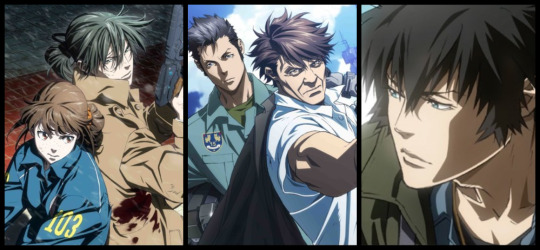
Svelate in occasione del Tokyo International Film Festival le locandine e le date di debutto dei film che andranno comporre la trilogia cinematografica denominata “Psycho-Pass Sinners of the System”. I primi due lungometraggi saranno mostrati in anteprima durante l’evento, iniziato il 25 ottobre, che si chiuderà il 3 novembre.
"Case.1 Tsumi to Bachi" (Caso.1 Crimine e Punizione), sarà incentrato su Nobuchika Ginoza e Mika Shimotsuki. La sceneggiatura è stata curata da Ryō Yoshigami, l’autore dei romanzi Psycho-Pass Asylum e Psycho-Pass Genesis. La pellicola debutterà in Giappone il 25 gennaio 2019 e la sigla di chiusura sarà “Fallen” degli EGOIST, remixata da Masayuki Nakano.

Altri membri dello staff:
Direttore delle animazioni: Satoru Nakamura
Supervisione animazioni Ryouta Shinya, Ryouta Furukawa, Shunji Suzuki, Fuhito Morita, Satoru Nakamura, Tetsurou Moronuki
Direttore tecnico: Tomoyuki Kurokawa, Yasuhiro Geshi
3D: Sublimation
Direttore della fotografia: Eiji Arai
Colorazioni: Emiko Ueno
Direttore artistico: Shuichi Kusamori
Direttore del suono: Yoshikazu Iwanami
Musiche: Yuugo Kanno
Character Design: Naoyuki Onda, Kyoji Asano, Hisashi Abe
Il cast:
Izumi Yasaka: Saori Yumiba
Takeya Kukuri: Sachie Hirai
Kyouka Tsujikari: Horie Oka
Rojion Matsuki: Rikiya Koyama
Aiko Gentaku: Kimiko Saito
Kouji Notou: Youhei Tadano
Akira Karasuma: Keiichi Nakagawa
Akane Tsunemori: Kana Hanazawa
Teppei Sugou: Hiroki Touchi
Shou Hinakawa: Takahiro Sakurai
Yayoi Kunizuka: Shizuka Itou
Shion Karanomori: Miyuki Sawashiro
"Case.2 First Guardian" (Caso.2 Primo Guardiano), sarà focalizzato su Tomomi Masaoka e Teppei Sugo. La sceneggiatura qua è stata curata da Makoto Fukami, già dietro a quella della prima stagione televisiva e del film del 2015. La pellicola debutterà in Giappone il 15 febbraio 2019 e la sigla di chiusura sarà “All Alone With You” degli EGOIST, remixata da Masayuki Nakano.

Altri membri dello staff:
Direttore delle animazioni: Hisashi Abe
Supervisione animazioni: Miyuki Nakamura, Ryouta Furukawa, Hisashi Abe, Tetsurou Moronuki
Direttore tencico: Yasuhiro Geshi
3D: IG 3D
Direttore della fotografia: Eiji Arai
Colorazioni: Emiko Ueno
Direttore artistico: Shuichi Kusamori
Direttore del suono: Yoshikazu Iwanami
Musiche: Yuugo Kanno
Character Design: Naoyuki Onda, Kyoji Asano, Yasuhiro Aoki
Il cast:
Risa Aoyanagi: Masumi Asano
Itsuki Ootomo:Masaki Terasoma
Rin Ootomo: Sayaka Ohara
Shinya Kougami: Tomokazu Seki
Nobuchika Ginoza: Kenji Nojima
Shuusei Kagari: Akira Ishida
Yayoi Kunizuka: Shizuka Itou
Shion Karanomori: Miyuki Sawashiro
Fredelica Hanashiro: Takako Honda
Akane Tsunemori: Kana Hanazawa
Mika Shimotsuki: Ayane Sakura
"Case.3 Onshuu no Kanata ni_" (Dall’altro lato di amore e odio_), vedrà invece come protagonista Shinya Kougami. Lo sceneggiatore anche in questo caso è sempre Makoto Fukami. La pellicola debutterà in Giappone l’8 marzo 2019 e la sigla di chiusura sarà “Namae no nai Kaibutsu” degli EGOIST, remixata da Masayuki Nakano.

Altri membri dello staff:
Direttore delle animazioni: Naoyuki Onda, Hisashi Abe, Satoru Nakamura
Supervisione animazioni: Miyuki Nakamura, Ryouta Furukawa, Tomomi Takeuchi, Hisaki Furukawa, Miho Ichikawa, Kazuchika Kise, Hisashi Abe, Tetsurou Moronuki, Ryouta Shinya, Satoru Nakamura
Direttore tecnico: Toshiyuki Kouno, Hirotaka Endou
3D: Sublimation
Character Design: Naoyuki Onda, Kyouji Asano, Hisashi Abe
Direttore della fotografia: Eiji Arai
Colorazioni: Emiko Ueno
Direttore artistico: Shuichi Kusamori
Direttore del suono Yoshikazu Iwanami
Musiche: Yuugo Kanno
Il cast:
Tenzing Wangchuck: Sumire Morohoshi
Fredelica Hanashiro: Takako Honda
Kinren Doruji: Tomoyuki Shimura
Guillermo Garcia: Tsutomu Isobe
Tshering Gurung: Wataru Takagi
Jean Marcel Belmondo: Satoshi Tsuruoka
Tutti e tre i progetti sono stati diretti da Naoyoshi Shiotani, che ne ha anche fornito il concept originale, presso lo studio Production I.G e saranno distribuiti da TOHO. Il tema musicale di tutti i film sarà “abnormalize” dei Ling Tosite Sigure, remixato da Masayuki Nakano.
In un futuro prossimo, lo stato mentale, la personalità e il potenziale criminale dei cittadini possono essere monitorati attraverso un sistema di scansione chiamato Psycho-Pass. Quando il Coefficiente di Criminalità di un individuo supera una certa soglia, la Sezione Anticrimine del Dipartimento di Pubblica Sicurezza ha il compito di arrestarlo. Per farlo, Ispettori e Agenti ricorrono a speciali armi chiamate Dominator in grado di sparare solo ai cittadini con un Coefficiente di Criminalità superiore alla soglia.
La prima stagione, di 22 episodi, della serie originale animata da Production I.G ha fatto il suo debutto nel 2012, seguita nel 2014 da una seconda, questa volta composta da 11 puntate e animata da Tatsunoko Production. L’anno successivo è uscito nei cinema giapponesi il film “Psycho-Pass Movie”. In Italia è attualmente distribuita da Dynit solo la prima stagione, sia in home video che in streaming su VVVVID.
L’opera ha ispirato diversi spinoff manga e la visual novel Psycho-Pass: Mandatory Happiness, disponibili anche nel nostro paese.
SilenziO)))
[FONTE]
#psycho pass#psycho-pass sinners of the system#psycho pass sinners of the system#psycho pass ss#anime#film
3 notes
·
View notes
Photo

Well, I’m selling some original art because of bills. Its mostly my Kenshin/Courtship of Lady Tokio pieces. They’re all $12 (includes shipping). All of them are inked and colored with Copic, with the exception of #8 which is pencil and watercolor.
If any of you are interested, send me a note saying which one you’re interested in or an email to:
[email protected]
1- Tsutomu & Morinosuke
2- Tokio in her monk garb
3- Kusunoki (he’s gonna die…)
4- Tomoe
5- Kenshin
6- Tokio
7- young Saitou
8- young Tokio
THANK YOU ALL!!!
#rurouni kenshin#courtship of lady tokio#takagi tokio#saitou hajime#takagi morinosuke#goro tsutomu#himura kenshin#yukishiro tomoe#art for sale
11 notes
·
View notes